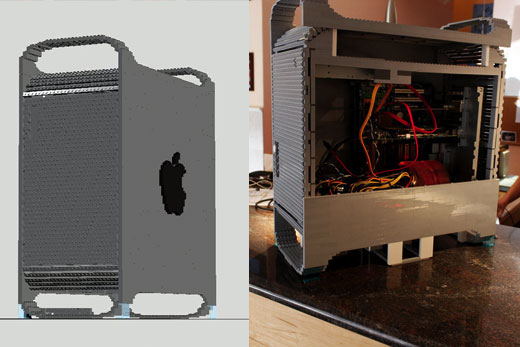The incredibly historic economic news keeps coming this week. Truly momentous. It’s as if every article, every book, every course I’ve ever taken in modern economic history and theory was to prepare to understand the events of the past 12-24 months.
In some ways, I think I’m in shock. It’s like watching history in the making. History that will be the subject of textbooks for decades to come. It’s really unbelievable.
After 70 years, we’ve come to the realization that yes, in fact, you cannot keep the benefits of a private company with public guarantees without paying the price at some point.
To rephrase, for decades, politicians from all parties have been in awe of the magic of Fannie Mae and its brethren. Born out of the Great Depression, and spun off to raise funds for Johnson’s Great Society projects, it seemed to good to be true:
- Private investors provide capital to add liquidity to the mortgage market
- Home buyers get cheaper rates
- Investors get “completely safe” securities that pay slightly more than Treasuries
- The company generates huge profits on the debt spread between their borrowing rates and mortgage rates/defaults
Well, now we know that it was, in fact, “too good to be true”.
There is a lot to be concerned about in the Paulson plan. It’s not at all clear why the sub-debt holders were left whole. It’s not at all clear why the shareholders were left with 20% of the company.
Given the magnitude of the problem and the unpredictability of the large number of parties and variables involved, however, I’m willing to assume that Paulson didn’t optimize for the “best” deal, but for the most pragmatic and least risky in the near term.
(By the way, if you are looking for details, the New York Times pieces here and here have the best write-ups I’ve found to date.)
My biggest fear, at this point, is that the plan really defers the final solution to this problem until the next administration, when hopefully we’re through the worst of this. It sounds pragmatic, but in reality, it makes it much more likely that by then the crisis will have past, and Republicans and Democrats will retreat to their historic disfunction on the topic.
I’ve read a multitude of proposed solutions, but in this case, I have to say, “Please listen to Alan Greenspan on this one.”
Yes, I know bashing Greenspan has become popular. I’ll address that in another blog post – I had the opportunity to read his recent auto-biography, and I thoroughly enjoyed it.
Try to ignore the bashing for now, and just focus on his recommendations for Fannie, Freddie, and their ilk.
Here is a WSJ story that summarizes his recommendations, made earlier this year:
His quarrel is with the approach the Bush administration sold to Congress. “They should have wiped out the shareholders, nationalized the institutions with legislation that they are to be reconstituted — with necessary taxpayer support to make them financially viable — as five or 10 individual privately held units,” which the government would eventually auction off to private investors, he said.
Instead, Congress granted Treasury Secretary Henry Paulson temporary authority to use an unlimited amount of taxpayer money to lend to or invest in the companies. In response to the Greenspan critique, Mr. Paulson’s spokeswoman, Michele Davis, said, “This legislation accomplished two important goals — providing confidence in the immediate term as these institutions play a critical role in weathering the housing correction, and putting in place a new regulator with all the authorities necessary to address systemic risk posed by the GSEs.”
But a similar critique has been raised by several other prominent observers. “If they are too big to fail, make them smaller,” former Nixon Treasury Secretary George Shultz said. Some say the Paulson approach, even if the government never spends a nickel, entrenches current management and offers shareholders the upside if the government’s reassurance allows the companies to weather the current storm. The Treasury hasn’t said what conditions it would impose if it offers Fannie and Freddie taxpayer money.
He’s right, and it’s not too late to move in this direction.
There is no reason for Fannie Mae & Freddie Mac to continue in their current forms.
The government should regulate strictly the requirements for securitizing and guaranteeing mortgages, the way that they regulate commercial banking, deposits, and other types of financial business. They can define specific types of mortgages, even give the types names to make it easier for consumers to comparison shop, and let the “Baby Fannies” compete to make markets in them.
By breaking them up, and auctioning them off to the mega-banks, both domestic and international, they guarantee a distributed system that will be extremely fault tolerant to the failure of any one entity. If they structure the regulation properly, they can turn this business into a stable, predictable, profitable business.
Gone is the government guarantee. Gone is the lobby machine. Gone is the too-big-to-fail entity.
I think Rep. Barney Frank (D, New York) is an example of why I’m afraid this won’t happen:
In the House, Mr. Frank, the chairman of the House Financial Services Committee, criticized the administration’s attempt to shrink the companies. He staunchly defended the companies’ ability to channel some of their profits from conventional mortgage financing to subsidize the construction of affordable rental housing and lower borrowing costs for low-income home buyers.
Mr. Frank seemed confident that he could stop the effort by the administration to ultimately shrink the companies through its rescue plan over the long term.
Catch that? What Mr. Frank likes is the fact that instead of getting Congress to agree to fund affordable rental housing programs, which would have to be paid through taxes or spending cuts elsewhere, he liked having an “off the books” slush fund to pay for these projects. He’s still at it:
After repeated clashes with the White House over legislation that authorized the Treasury to bail out the companies, Mr. Frank succeeded in including a provision that required Fannie and Freddie to divert some of their profit from buying up “jumbo” mortgages for expensive houses into a fund for affordable rental housing.
Great. After all, passing a law to force Fannie Mae to spend money on a program doesn’t cost the taxpayer anything, does it?
Well, it does. Those strings came at a price. The price was the implicit government guarantee.
And now we have a better idea of what that price really was. And it’s not worth it.







